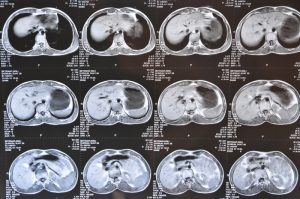 There are always risks involved when it comes to medical procedures. MRCP or Magnetic Resonance Cholangiopancreatography doesn’t come without any risks but compared to ERCP or Endoscopic retrograde cholangiopancreatography, it is believed to be a much safer alternative.
There are always risks involved when it comes to medical procedures. MRCP or Magnetic Resonance Cholangiopancreatography doesn’t come without any risks but compared to ERCP or Endoscopic retrograde cholangiopancreatography, it is believed to be a much safer alternative.
Using magnetic resonance imaging, MRCP is non-invasive. This enables doctors to scan and visualize pancreatic and bile ducts, that are common locations of tumors. This would further determine if patients should undergo a surgery for removal and prevent tumor metastasis.
Preparations Before MRCP:
This diagnostic procedure usually requires fasting, meaning no food or drinks allowed hours before the examination. Guidelines may vary per facility but usually, it is 4 hours prior to the exam. This would help reduce gastroduodenal secretions, reduce motility and promote gallbladder distension.
MRCP Procedure:

If MRCP requires a conventional contrast-enhanced magnetic resonance imaging for a functional study of the upper abdomen, pancreas, and biliary system, it is important to screen the patient for food or drug allergies. Certain kidney diseases contraindicate the introduction of contrast material to the body so this should be something to consider.
Claustrophobia Tendencies
Since the examination requires the patient to lie down and stay still throughout the procedure, proper coaching and orientation is a must. It is possible for the patient to feel claustrophobic so make sure to assess the patient’s level of orientation.
Positive affirmations can help calm patients who are struggling to conquer their fear of being contained. In some instances, a therapist can be contacted to help desensitize the patient with extreme fears and guide them through the entire procedure.
Here are some ways on how to deal with claustrophobia among patients who will undergo MRI:
Pre-scan visit
If a patient can have a pre-scan visit, this would open up an opportunity for him/her to familiarize the setting. Have them prepare questions and for the radiologists or operators to answer briefly what the patients should expect to occur during the procedure.
Bring a Company
It is always reassuring to know that someone you trust is close by. Help calm the patient by having their companion hold their hand as permitted by the facility. Make sure they comply with the safety checklist so they can be with the patient and keep them relaxed.
Breathing Modifications
Breathing modifications and nerve stimulation are generally effective methods of promoting relaxation to anxious patients. Offering music therapy helps calm the patient, just like how MRI-safe headphones during the exam are permitted. Breathing exercises prior and during the exam can greatly help lessen the tension.
 In extreme cases, light sedatives can be introduced as prescribed by the doctor to help the patient calm down. Although not always recommended, if the procedure is needed to be accomplished soon and the patient requires to be in a calm state then drug administration may be required.
In extreme cases, light sedatives can be introduced as prescribed by the doctor to help the patient calm down. Although not always recommended, if the procedure is needed to be accomplished soon and the patient requires to be in a calm state then drug administration may be required.
Proper guidance and preparation help accomplish any medical procedure safely and accurately. It is important to follow the safety checklist provided by the facility. Also, for both the patient and the medical team to have an open communication so as to manage both party’s expectations.
